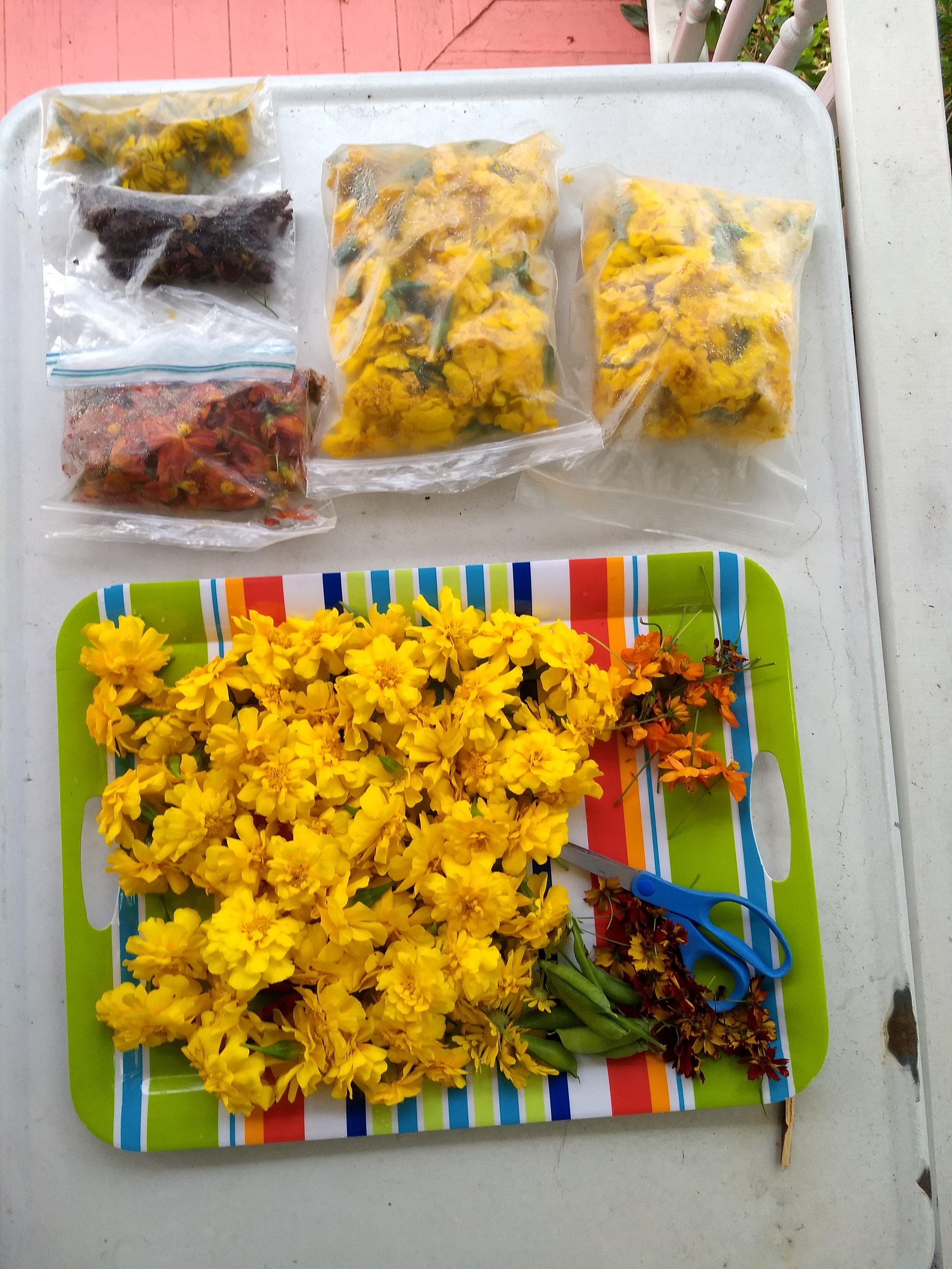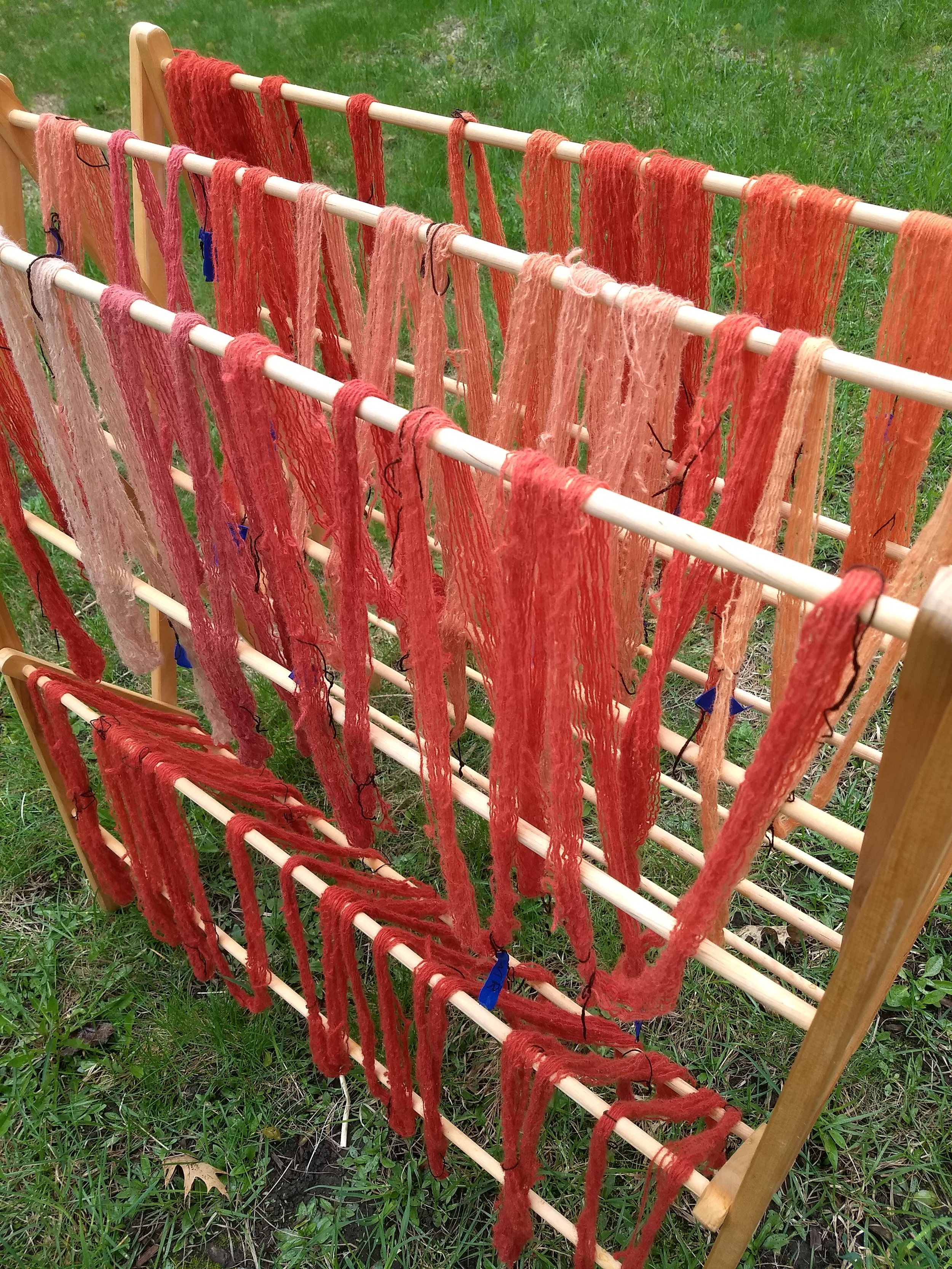I did a little weaving while dinner was in the oven, but its gotten too dark to photograph anything well tonight. The day’s activities ran late; it was absolutely glorious out. Finally, that first springlike day when everyone goes outside. I walked all up and down town with the kid, while they made a sprawling choose-your-own-adventure story about a magic key that comes alive and a wall that opened up in the studio and a golden shuttle and a yarn blaster. When we got home, we inventoried dye plant seeds, composting the old ones. I tend to be an over-planter, especially when it comes to dye plants.
Below, you see the pink flowers of the indigo plant on the left, against my (very) old indigo demin jacket. Technically, indigo is actually a pigment that adheres to the surface of each fiber, not a chemically bonded dye. It’s applied to fabric through successive dips into the indigo vat to accumulate more and more layers of pigment onto the fiber’s surface. The appearance of these pink flowers actually mean that this indigo is a little beyond its peak and should have been harvested about a week earlier! Indigo is wonderfully light- and wash-fast, but because it’s actually only sitting on the surface of the fiber, it will wear or wipe off over time, giving demin that ‘worn-in’ look. In the middle, you see flowers that give yellows and golds, but with the addition of some iron or a pH shift also give greens and oranges. These are marigolds, dyer’s chamomile, dyer’s coreopsis and cosmos. In the final photo, you see the reds from various madder dyebaths. Madder is a fantastically ugly plant that grows in a tangle with grabby, velcro-like leaves. Its magic comes from its roots, that will grow as thick as your thumb and look disturbingly like rusty, bloody worms when you harvest them.
Our lot is a little too small for me to source all my own dyeplants, especially the madder—which doesn’t seem to have enough of a growing season in VT for its color to fully develop—and indigo, which you need so much of. The plant must be composted before it can be used in the dye vat, so it takes a huge bushel of leaves to result in a good color through traditional methods. Rowland and Chinami Ricketts have built an amazing small-scale indigo farm for their dye work in Indiana, based on traditional Japanese indigo processing techniques. The photos of the process are amazing—much more than a backyard grower can manage! I try to do grow enough of my own dye plants to continue to feel connected to the process, but not so many that it stops looking like a front yard! This year, I’ll probably do some more indigo for some fresh-processing experiments, along with more coreopsis and marigolds to build up a better stash of green shades. I feel a little self-conscious cutting off all the blooms right at the head when they’re at their peak of vibrancy, (sorry neighbors!) but that’s crucial to getting the best color of the plants.


